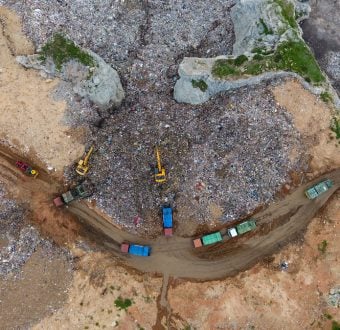Every year, the summer’s warmer, drier months bring along fire season. As we enter the second half of the year, we are bracing for what fires around the world will bring us in 2020.
Last year, the record-breaking fires in the Amazon dominated global headlines. In 2018, the Camp fire took 85+ lives and thousands of structures as it rolled through Northern California. Earlier this year, Australia’s summer brought such horrific, record-breaking fires that it is now known as the Black Summer. At this very moment, Siberian fires have already consumed an area larger than the size of Greece. Tropical rainforests in Indonesia, stretches of savanna in Central Africa, and boreal forests in Canada all endure fire seasons as well.
While fire itself is a constant, fires around the world vary greatly. They can be hard to categorize with their own mix of geographical, ecological, political, and economic forces, and root causes. While some fires are intentionally set to clear land, others start naturally and are healthy to fire-dependent locations, while others are even happening in remote, rarely burned places, driven by climate change.
While these fires are all different, there is one common thread: the public health crisis that smoke brings to population centers around the globe. This crisis will be particularly alarming this year, as the world faces a pandemic that will be exacerbated by the lung damage from smoke inhalation. Both the pandemic and this fire pollution are proven to disproportionately harm Black, Brown, Indigenous, and low-income communities.

Aerial view of a large burned area in the city of Candeiras do Jamari in the state of Rondônia, Brazil.
The Amazon & Cerrado of Brazil
Fires in the Amazon, like the ones that captivated global attention last year, are not natural; rather, they are set deliberately to clear cut forest and other vegetation. These cleared areas are primarily used for the expansion of cattle pasture. Similarly, the forests and grasslands in the climate-critical Cerrado biome are also burned to make way for cattle production or animal feed. The smoke these fires release is a public health catastrophe in a region with precarious access to health services.
This past June recorded the highest number of fires on record, despite a ban on fires in some parts of the Brazilian Amazon. Since then, Jair Bolsonaro, the President of Brazil, has continued to lead the charge to further dismantle environmental protections and law enforcement. Experts are warning that fires in 2020 could be as bad as or even worse than 2019.
Leading Amazon experts also warn that if nothing changes, the Amazon could lose enough forest that it could reach a “tipping point” and fail as an ecosystem.

Smoke rises during fires in the peatland area in Palangka Raya, Central Kalimantan, Indonesia.
Indonesia
A similar story is playing out in Southeast Asia, where in 2019 alone 1.6 million hectares of tropical forests and peatlands in Indonesia burned, in many cases to make way for pulp/paper and palm oil plantations. The cheapest and easiest way to clear land is to set it ablaze. The risk of these fires is greater under the combination of the climate crisis and the continuous expansion of the plantation sector on forests and peatlands. The draining of peat canals and increased drought makes these fires difficult to contain as they ignite deep peat soil which emits tremendous amounts of carbon into the atmosphere. The smog and haze from Indonesia’s forest fires have become an annual public health crisis across Southeast Asian cities. In 2015, the haze from one of the worst fires there contributed to the premature death of 100,000 people. With the COVID-19 pandemic, that impact on human health this year could undoubtedly be staggering.

Majestic Giant Sequoias trees tower over National Park Service in the Merced and Tuolumne Groves in the Stanislaus National Forest of California.
California
A very different story emerges every summer in the forests and wildlands of California. Fires here are an expected and natural force in this fire-dependent ecosystem. Several key forest species, including the iconic giant sequoia trees, require fire in order to release seeds and foster new growth. However, when fires occur near population centers, these fires can have devastating direct human and property impacts, as well as wider public health impacts from smoke. Climate change is increasing the occurrence of hotter and drier weather, which are ripe conditions for these wildfires.
For almost a century, public lands crews have focused on suppressing wildfire in California because of the economic and human impacts they bring. However we have learned that despite what public officials typically say during a wildfire, logging and ‘thinning’ to remove ‘fuel’ actually put communities at higher risk for catastrophic fire. Leaders like Gavin Newsom should instead focus on climate healthy policies, like phasing out fossil fuels (instead of issuing fracking permits during a global pandemic) and dedicate state resources toward the proven ways to safeguard homes, to prepare residents, and to minimize how wildfire and smoke directly impact lives and property.
Arctic
Wildfires are reaching further and further into areas of the globe not typically burned. Vast areas of Siberia are currently burning, while Greenland and Alaska have both experienced years of record breaking fires. Rising temperatures linked to the climate crisis are fueling these fires as the arctic is warming more quickly than the rest of the planet. These fires are also exacerbating the climate crisis. In addition to the direct carbon they emit into the atmosphere, they are also a source of black carbon, which, when it settles on white ice, absorbs more of the sun’s energy instead of reflecting it.



